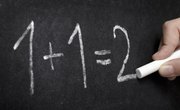Some concepts of time might fly right over your preschooler's head, but he does have enough maturity to grasp "before" and "after." Help your little one understand events that happen before and after by relating simple lessons to your tot's daily life. With a little time and effort, your child will be a time expert, ready to move on to bigger concepts.
Set up a predictable routine for your preschooler to help him learn the concept. According to the Scholastic website, a little child's daily routine is an effective way to demonstrate and illustrate events that come before and events that come after because the child is living it.
Talk about activities in relation to each other using the words "before" and "after." For example, you might say, "It will be snack time after nap" or "Before bedtime, we will have a bath." Keep up this frequent narrative of before and after references, and eventually your little one will master the idea.
Ask questions of your little one to see how much understanding and comprehension is taking place. For example, you might ask, "Amanda, what are we going to do after we finish walking the dog?" Listen to see if your little one knows what's coming next in the daily routine. If you get a wrong answer, remind your child about the next activity. If you get the right answer, smile big and hand out a high-five to your kid.
Give some concrete examples of before and after using numbers, too. For example, you might say, "The number one comes before two" or "The number three comes after two." Because preschoolers usually have a firm grasp of a few beginning numbers, this can be effective for showing before and after.
Use linear examples of before and after for more teaching opportunities. For example, when waiting in a grocery line, you might say, "We are in line after the lady with the red shirt."
Warning
The National Association for the Education of Young Children advises that kids under age six lack the maturity to really understand sequential time periods relating to the calendar. If you push a preschooler to conceptualize these ideas, you will likely just frustrate her or create feelings of inadequacy. Instead, focus on basic before-and-after concepts that don't involve specific time periods like "days" and "weeks."
Related Articles
References
Warnings
- The National Association for the Education of Young Children advises that kids under age 6 lack the maturity to really understand sequential time periods relating to the calendar. If you push a preschooler to conceptualize these ideas, you will likely just frustrate her or create feelings of inadequacy. Instead, focus on basic before and after concepts that don't involve specific time periods like "days" and "weeks."
Writer Bio
Kathryn Hatter is a veteran home-school educator, as well as an accomplished gardener, quilter, crocheter, cook, decorator and digital graphics creator. As a regular contributor to Natural News, many of Hatter's Internet publications focus on natural health and parenting. Hatter has also had publication on home improvement websites such as Redbeacon.











